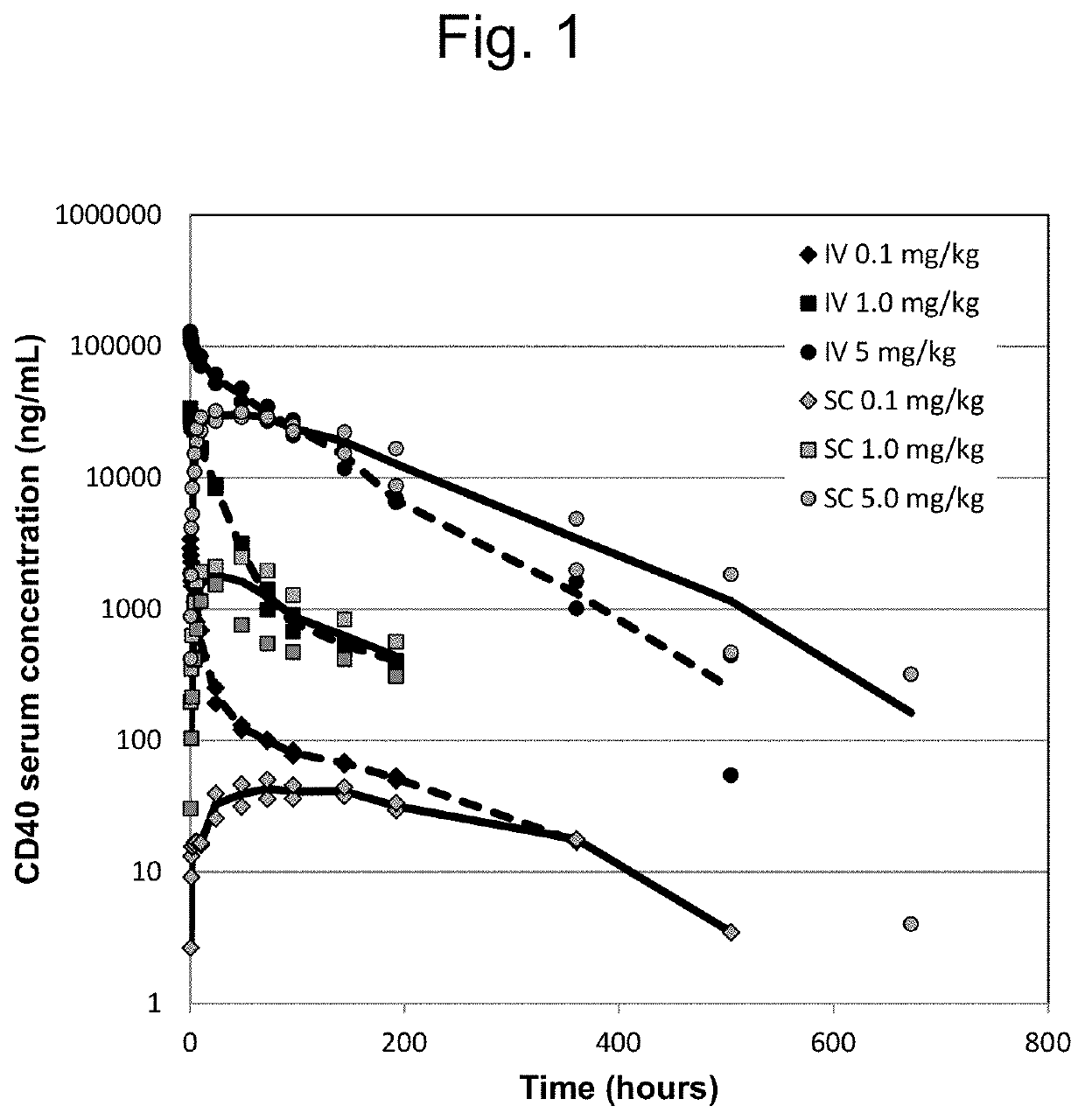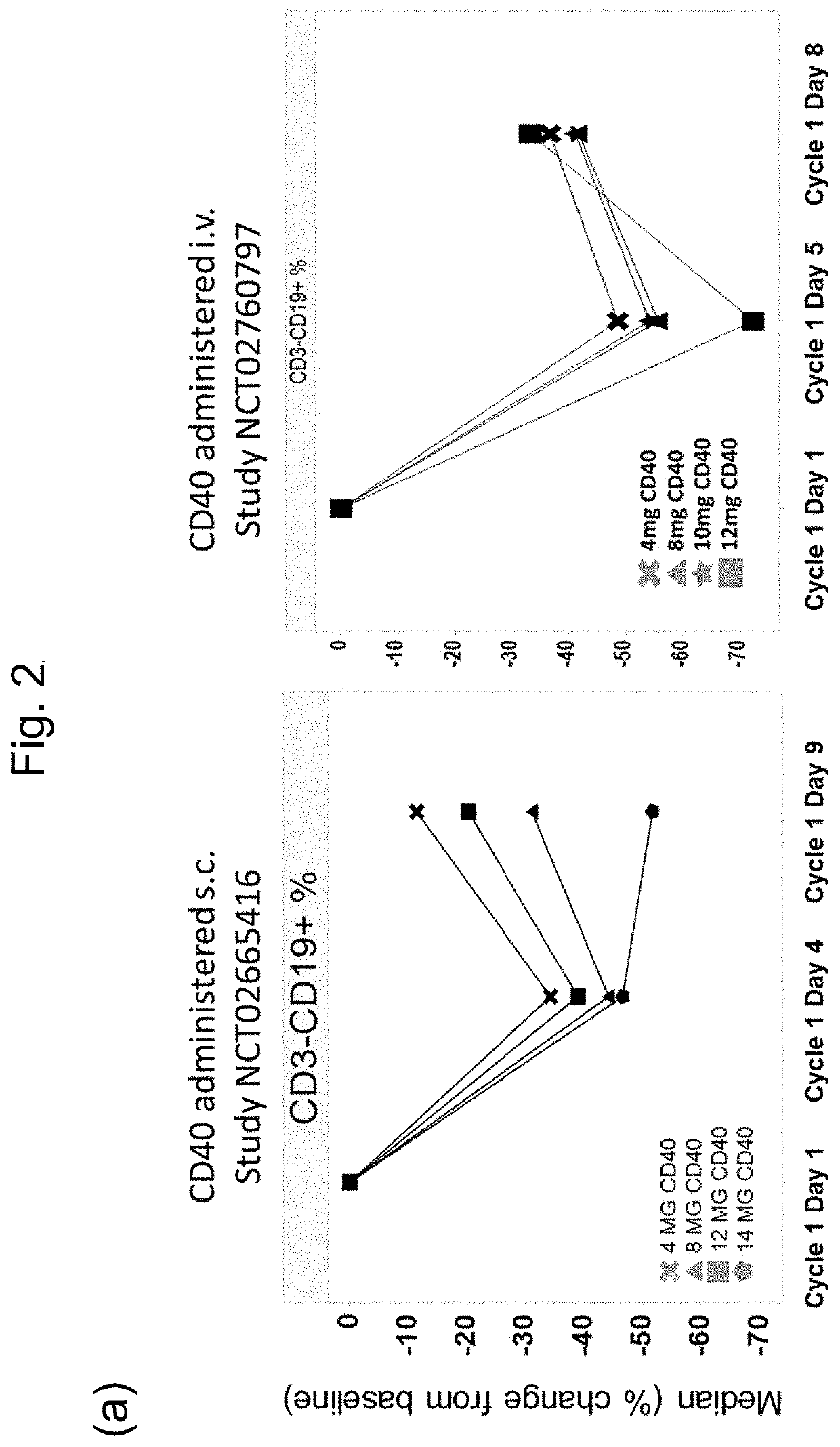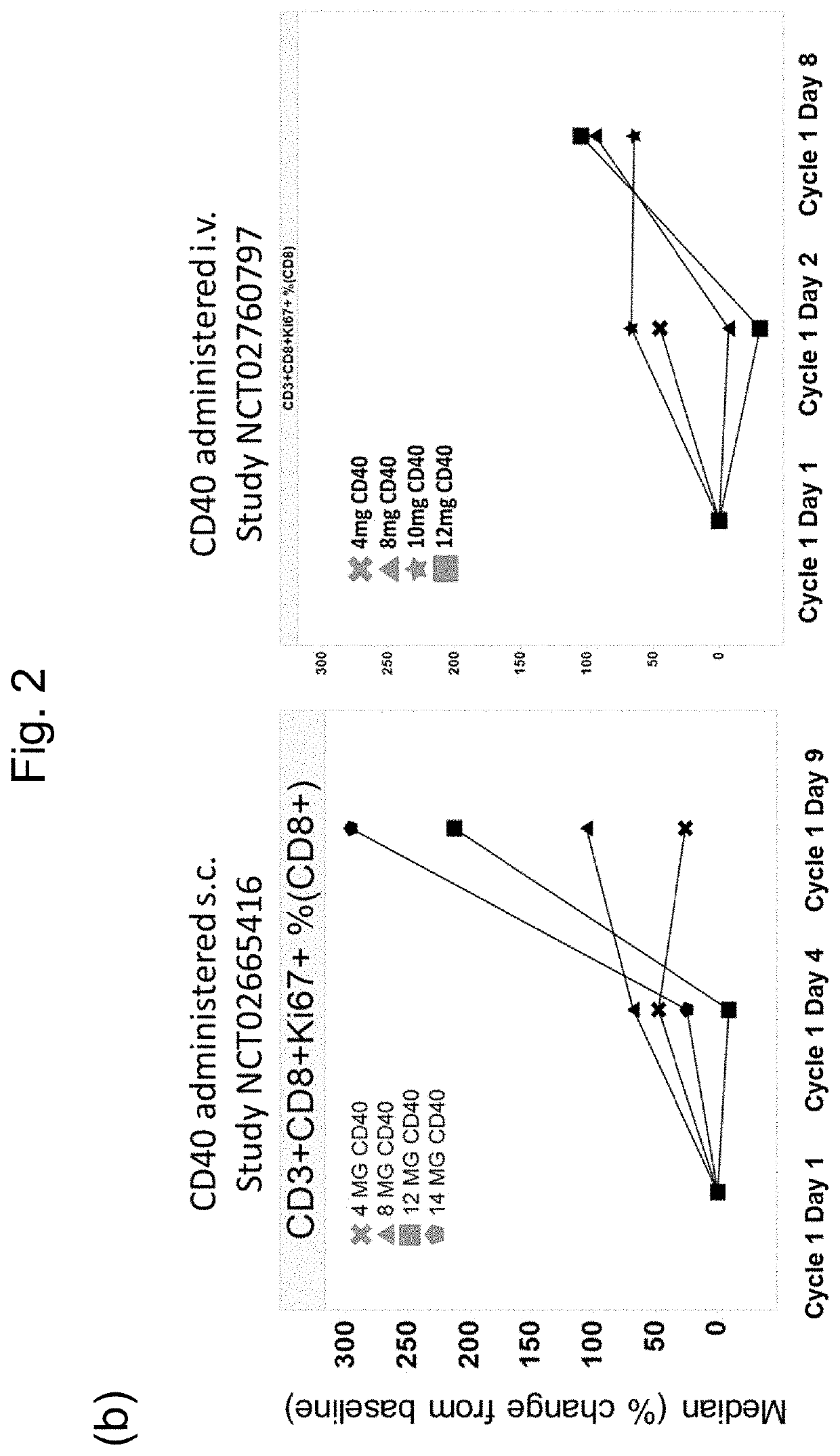Novel administration routes for immune agonists
- Summary
- Abstract
- Description
- Claims
- Application Information
AI Technical Summary
Benefits of technology
Problems solved by technology
Method used
Image
Examples
example 1
[0099]The following example illustrates the preparation of a liquid pharmaceutical preparation in accordance with the present invention. In this example, the immune agonist is the CD40 antibody with the INN selicrelumab, or the antibody 21.4.1 (ATCC Deposit No. PTA-3605) as disclosed in WO2003 / 040170. The following preparations steps were applied under sterile conditions:
[0100]1. Preparing a buffer solution (pH 5.5) containing:[0101]20 mM sodium acetate,[0102]140 mM sodium chloride 2. Concentrating and buffer-exchanging the CD40 antibody into buffer in step 1, using tangential flow filtration.
[0103]3. Conditioning the buffer-exchanged product with Polysorbate-80 stock solution to achieve 0.02% (w / v) Polysorbate-80 and a final product concentration of 10 mg / ml.
example 2
[0104]The following example illustrates the assessment of pharmacokinetic (PK) data such as the maximum plasma concentration (Cmax) of the CD40 agonist preparation according to Example 1 in Cynomolgus monkey following a single intravenous (iv) and subcutaneous (sc) administration:
[0105]2.1 Cynomolgus monkeys were dosed once by intravenous or subcutaneous route at a dose level of 0.1, 1.0 and 5.0 mg / kg. Samples for systemic exposure were taken from all animals at predose and scheduled times through 58 days post-dosing:[0106]IV Administration: predose, 0.08, 0.5, 1, 2, 4, 6, 10, 24 hours post dose and then on Days 3, 4, 5, 7, 9, 16, 22, 29, 43, and 58.[0107]SC Administration: predose, 0.5, 1, 2, 4, 6, 10, 24 hours post dose and then on Days 3, 4, 5, 7, 9, 16, 22, 29, 43, and 58.
[0108]Blood samples for pharmacokinetic evaluations were allowed to clot in tubes for serum preparation for 60 min. at room temperature. The clot were spun down by centrifugation (at least 10 min., 1200 g, +4° ...
example 3
[0111]This example demonstrates the improved tolerability / adverse event profile of the subcutaneous (sc) dosing compared to intravenous (iv) injection as observed in clinical trials (Table 3).
TABLE 3Reported Averse Events (subcutaneous vs intravenous dosing)Reported AdverseIV Administration (n = 29) 1SC Administration (n = 36)2Event TermAll causalities [related]Cycle 1-all causalities [related]Cytokine Release16 (55%) [16 (55%)]0 (0%)Syndrome (CRS)1. Chills1. 4 (13.8%) [4(13.8%)]1. 2 (5.6%) [1(2.8%)]2. Rigors2. reported as a symptom of CRS2. —3. Fever3. reported as a symptom of CRS3. 10 (27.8%) [5 (13.9%)]4. Nausea4. 10 (30.5%) [8 (27.6%)]4. 6 (16.7%) [1 (2.8%)]5. Vomiting5. 3 (10.3%) [3 (10.3%)]5. 3 (8.3%) [1 (2.8%)]6. Muscle ache6. 4 (13.8%) [2 (6.9%)]6. 1(2.8%) [1 (2.8%)]7. Back pain7. 3 (10.3) [2 (6.9%)]7. —AspartateTotalGr1Gr2Gr3Gr4TotalGr1Gr2Gr3Gr4Aminotransferase171052—19163——(AST) increase(58.6%)(52.8%)AlanineTotalGr1Gr2Gr3Gr4TotalGr1Gr2Gr3Gr4Aminotransferase11731—13121——(AL...
PUM
| Property | Measurement | Unit |
|---|---|---|
| Mass | aaaaa | aaaaa |
| Mass | aaaaa | aaaaa |
| Mass | aaaaa | aaaaa |
Abstract
Description
Claims
Application Information
 Login to View More
Login to View More - R&D
- Intellectual Property
- Life Sciences
- Materials
- Tech Scout
- Unparalleled Data Quality
- Higher Quality Content
- 60% Fewer Hallucinations
Browse by: Latest US Patents, China's latest patents, Technical Efficacy Thesaurus, Application Domain, Technology Topic, Popular Technical Reports.
© 2025 PatSnap. All rights reserved.Legal|Privacy policy|Modern Slavery Act Transparency Statement|Sitemap|About US| Contact US: help@patsnap.com



